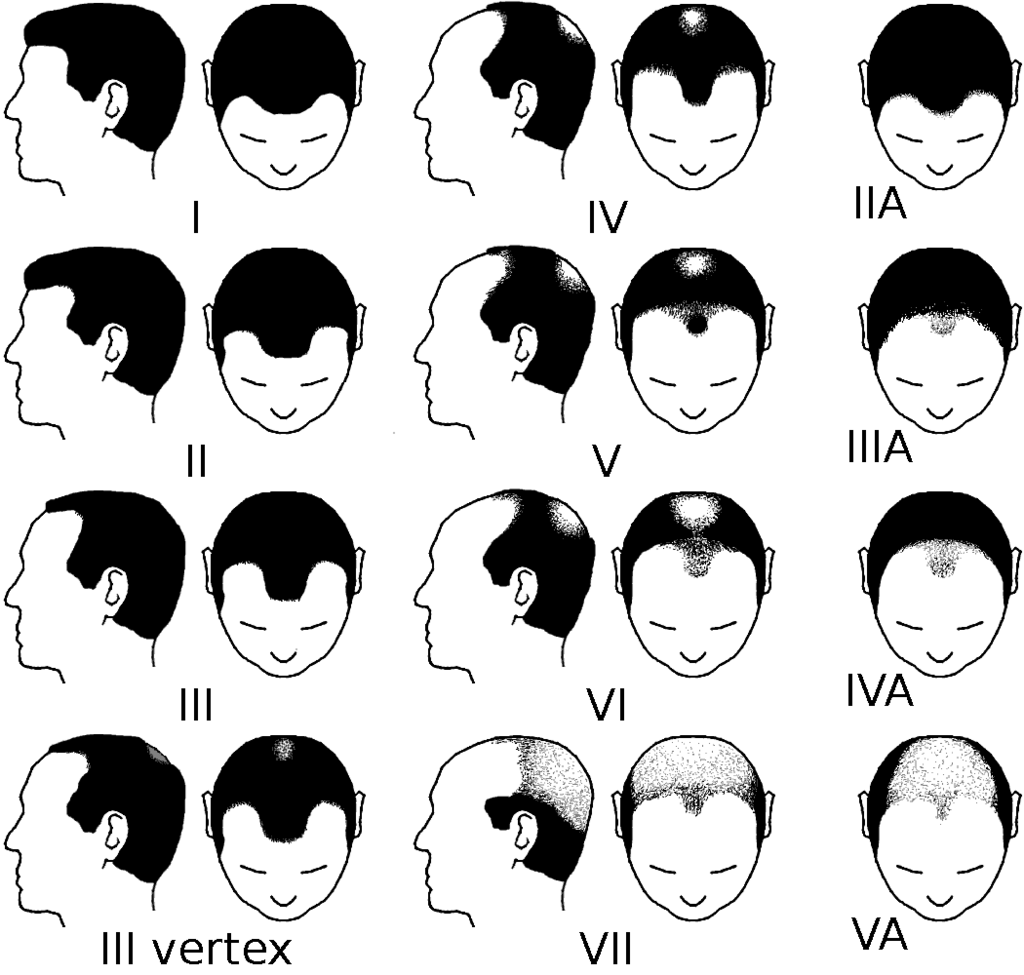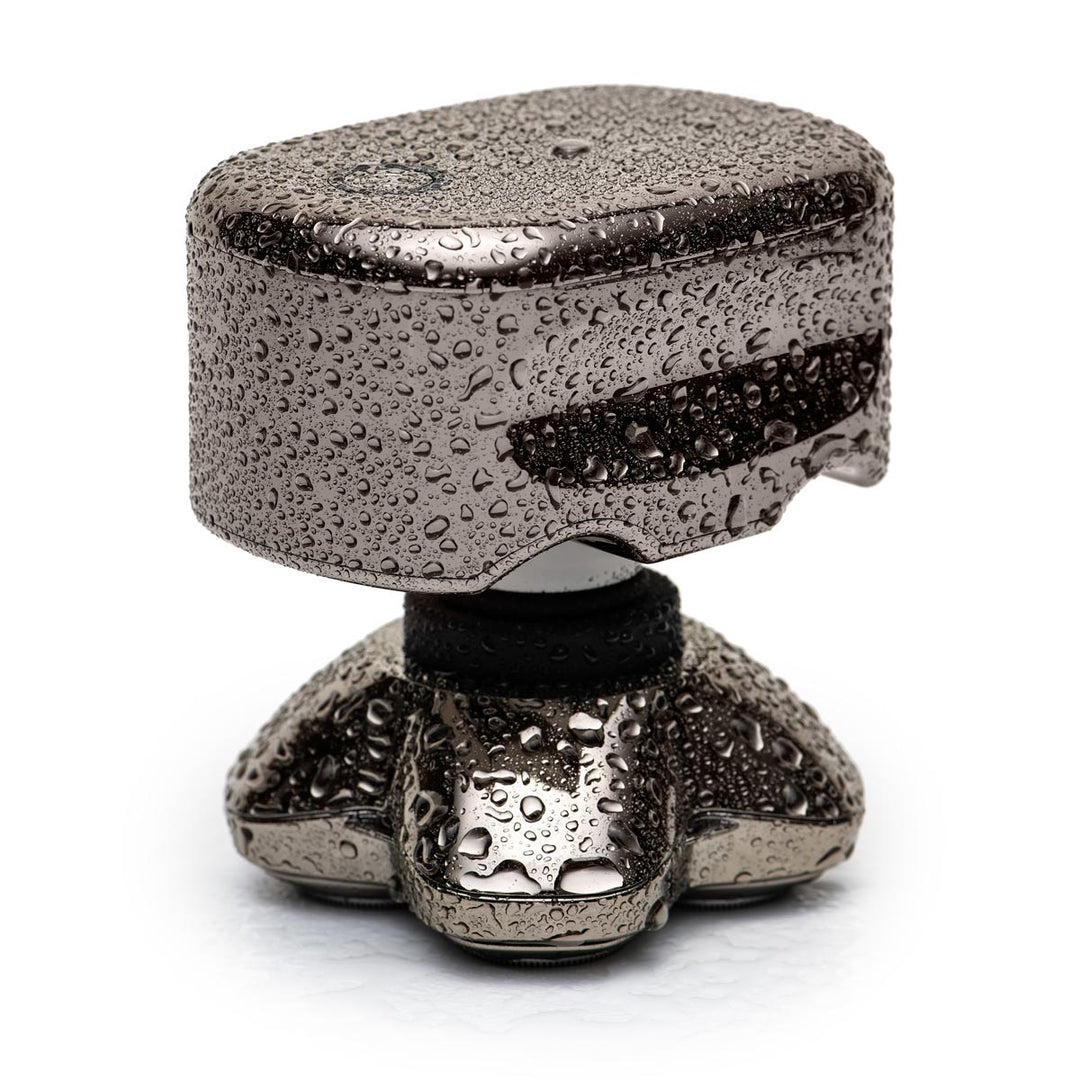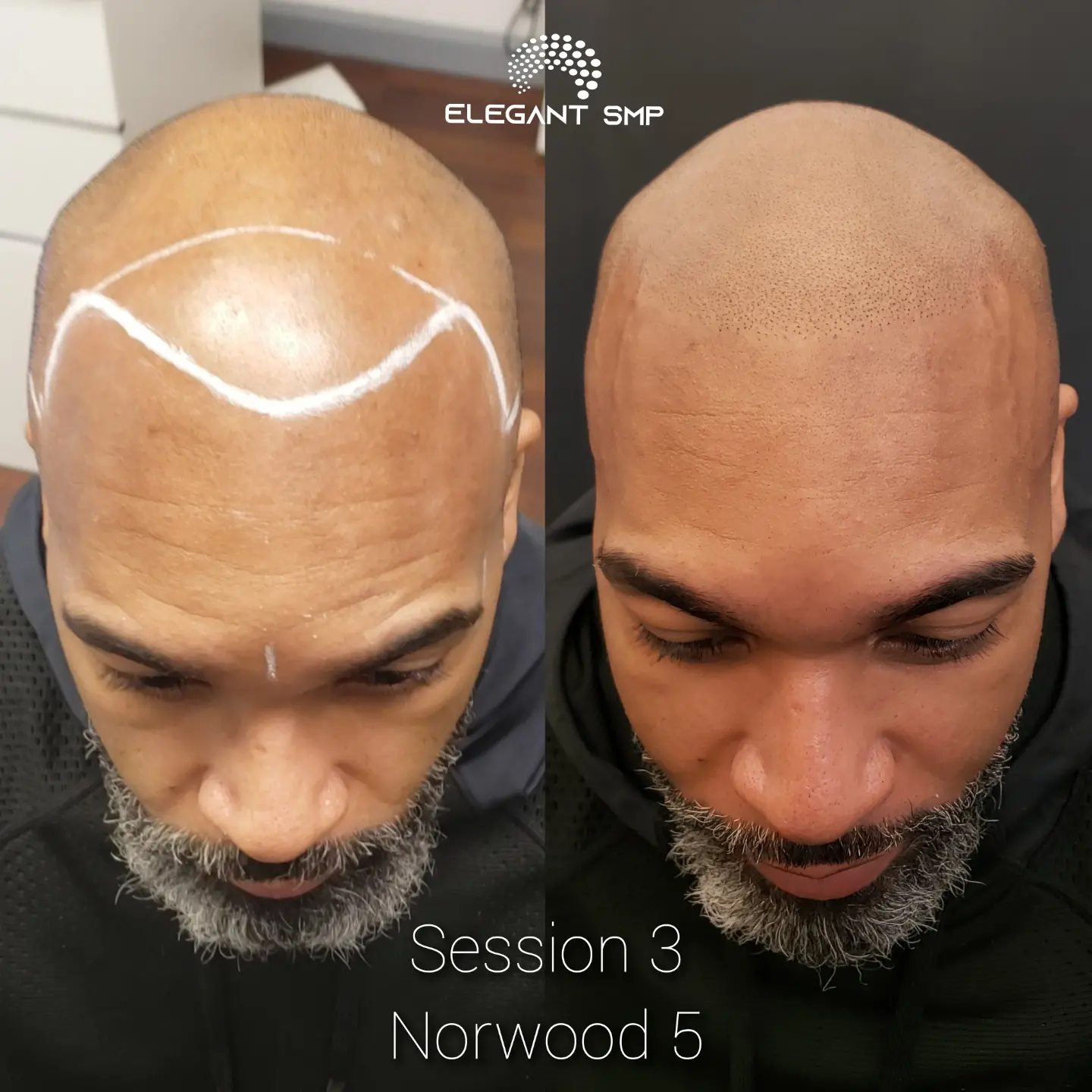Table of Contents

The Norwood-Hamilton Scale: Your Guide to Balding Stages
To properly address male pattern hair loss, it’s essential to comprehend the progression stages. The Norwood-Hamilton Scale is an instrumental tool that medical professionals use to categorize the extent of male pattern hair loss. Each stage on this scale offers insight into the severity of hair loss and its visual impact.
Stage I: Adolescent Hairline
The journey starts with the Adolescent Hairline stage. At this initial phase, there is no noticeable hair loss. The hairline is positioned on the upper brow crease, maintaining the fullness that one experiences during adolescence.
Stage II: Adult Hairline
As we age, our hairline slightly recedes to form the Adult Hairline. This stage features minimal hair loss and manifests as a small recession at the temples.
Stage III: Early Baldness
Entering Stage III, early baldness becomes evident. The hairline begins to form deeper recessions at the temples, often referred to as an "M" shape. Additional thinning may start at the crown of the head during this phase.
Progression's Impact on Confidence
The advancement from Stage II to Stage III can have profound psychological effects, as this is typically when the hair loss becomes cosmetically significant.
Signs of Early Baldness:
- Deepened Temporal Recessions: Noticeable “M” shaped hairline.
- Crown Thinning: Beginning signs of thinning at the vertex.
Stage IV: Noticeable Hair Loss
Stage IV signifies a marked increase in hair loss severity. The frontal region experiences a deeper recession, and moderate thinning propagates at the crown, separated by a dense band of hair in the middle.
Stage V: Advanced Hair Loss
At the fifth stage, a band of hair between the frontal and crown regions thins, leading to more distinct balding areas. This transition can contribute to feelings of self-consciousness concerning one’s appearance.
Distinct Characteristics in Stage V:
- Widened Temporal and Crown Balding: Hair loss is more noticeable and distinct around both areas.
- Thinning Interconnection: The band of hair between frontal and crown regions progressively thins out.
Stage VI: Extensive Balding
By Stage VI, hair loss is extensive, forming a characteristic horseshoe pattern around the balding region. Sparse hair may persist, but overall coverage is substantially reduced.
Stage VII: Severe Balding
Stage VII represents the zenith of the hair loss spectrum. Only a wreath of thin hair remains, encircling the sides and back of the scalp.
Solutions Tailored to the Stages of Balding
Navigating the different stages of male pattern hair loss can be daunting. Fortunately, various solutions cater to each stage’s specific needs, offering ways to restore confidence and achieve a complete image.
Non-surgical Solutions
Non-surgical options, such as topical treatments and medications, can be particularly effective during the early stages of balding.
Common Non-surgical Solutions:
- Minoxidil and Finasteride: Effective for slowing hair loss and promoting regrowth.
- Laser Therapy: Helps stimulate hair follicles to reignite growth.
Surgical Interventions
For those seeking a more definitive solution, surgical interventions like hair transplants become necessary during the advanced stages.
Types of Surgical Treatments:
- FUT (Follicular Unit Transplantation): Transplants a strip of scalp.
- FUE (Follicular Unit Extraction): Transplants individual hair follicles.
Elegant Scalp Micropigmentation (SMP)
Given the variety of treatments, scalp micropigmentation stands out for its ability to deliver a natural and undetectable result. For those tired of the daily hair loss routine and in search of a lasting solution, Elegant SMP offers state-of-the-art procedures.
Why Choose Elegant SMP?
- Natural-looking Results: Utilizing the best equipment and techniques.
- Faded Hairline Technique: Popular worldwide and perfect for recreating the 5 o'clock shadow look.
| Stages of Balding | Non-Surgical Solutions | Surgical Solutions | Scalp Micropigmentation |
|---|---|---|---|
| Stage I – II | Minoxidil, Finasteride, Laser Therapy | Often not necessary at this stage | Creates fullness in visible areas |
| Stage III – IV | Advanced medications, PRP Therapy | Considering hair transplant if alopecia progresses | Creates well-defined hairlines and natural look |
| Stage V – VII | Combination therapies | Hair Transplant (FUT, FUE) | Comprehensive head coverage and faded hairline |
Understanding Hair Loss Mechanisms
To further educate yourself on the mechanics of hair loss, understanding male sex hormones such as testosterone and dihydrotestosterone (DHT) is crucial. These hormones play a pivotal role in the progression of male pattern baldness.
How Male Sex Hormones Influence Hair Loss
- Testosterone: Converted to DHT, which shrinks hair follicles.
- DHT: Dihydrotestosterone binds to receptors in hair follicles, leading to miniaturization and eventual hair loss.
Taking Action Against Hair Loss
If you’re grappling with male pattern hair loss and looking for a natural, effective solution, scalp micropigmentation with Elegant SMP may be the perfect choice. Our clinic offers premium services to ensure exceptional results that are second to none.
Key Points to Remember:
- Expertise Matters: Trust a clinic with a proven track record.
- Personalization: Each treatment is tailored to individual needs and stages of hair loss.
- Natural Results: Achieve a 5 o'clock shadow look with our faded hairline technique.
Conclusion: Reclaim Your Confidence
Overcoming hair loss is about more than appearances—it’s about reclaiming your confidence and living life to the fullest. Elegant SMP offers a path to achieve these goals with unparalleled expertise in the scalp micropigmentation field. If you’re tired of the daily struggle and ready to embrace a complete image transformation, contact Elegant SMP today. Our team is committed to delivering results that are both natural and undetectable, ensuring you feel your best in no time.
Contact us now at Elegant SMP and start your journey towards a renewed self-confidence!












